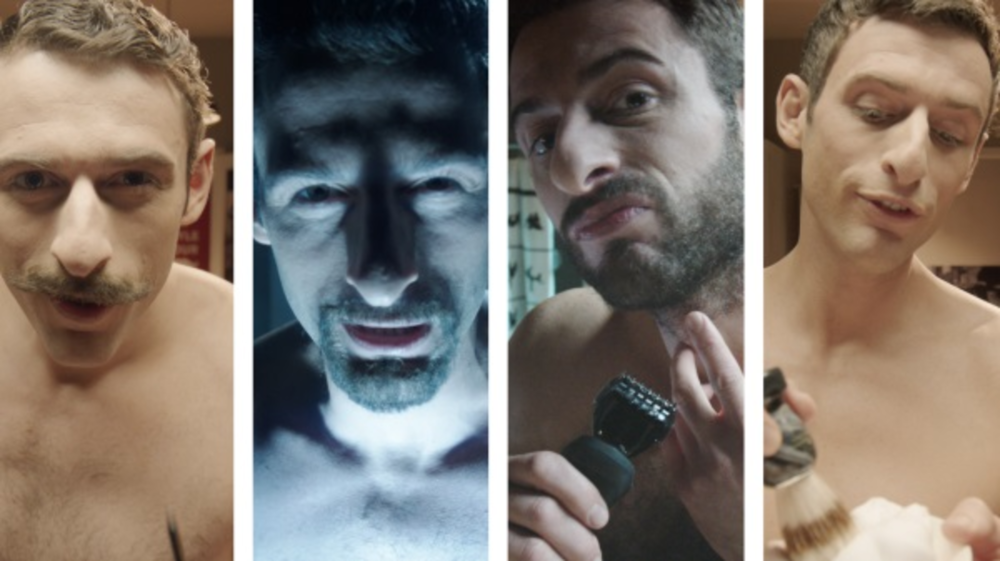(Click image to start interactive video.)
For many marketers today, video is where it’s at. In fact, analysts for technology company Brainshark say that by 2017, 74% of all Web traffic will come from video plays.
In a recent campaign, marketers at tech giant Philips determined that mobile videos could be the switch to spark—and keep—the attention of one perennially hard-to-reach demographic: on-the-go young men.
“Our biggest challenge was reaching out to young guys,” says Lenze Boonstra, global marketing leader of personal care for Philips, as he described the company’s goals to market a new electric shaver to young men in Europe. Boonstra says that the typical Philips customers for this type of product are men ranging from 35 to 45 years old, who only buy a new electric razor about every five to seven years.
“So, of course, we knew that we had to add new consumers to our business,” Boonstra explains. “Specifically, we needed young men into this category, who can be hard to reach. This was a new domain for us.”
Boonstra says the first step to attract these 20- to 25-year-old men in Europe was to recognize how the personal shaving styles of more youthful guys can be strikingly different than those of older men. “When you look around you, you’ll see more and more different beard styles. Even as recently as five years ago, it was not normal to have stubble or a full beard in the corporate office. Now, that’s completely changing.”
Realizing that young men often express themselves with different grooming styles, Philips’ marketers had to determine the best way to engage this youthful customer base. “We wanted to do what we call a ‘deep dive’ into this demographic of young men and their daily lives,” Boonstra says. “The first thing was to get on the radar of these guys, and Philips grooming tools weren’t on their radar. So, we needed to create a campaign in which we could capture this category. And what we realized is that these guys consume media; they consume online videos. And in the online environment, engagement is critical.”
With that in mind, Boonstra says, marketers at Philips worked to create a campaign that was engaging, digital, and mobile. “We asked ourselves, ‘Where are these guys?’ So we created a focused media strategy rooted in YouTube. We also understood that mobile is extremely important. Why? Because these guys are mobile.” In fact, Precision Market Insights from Verizon reports that 76% of males 18 to 34 years old make purchases on their mobile devices.
So, with tools from Rapt Media, Boonstra and the marketing team built a playful interactive campaign centered on mobile videos to promote the Philips Click & Style electric razor. Entitled “Designed to Play,” the online campaign allowed viewers to create their own storylines based on their personal styles and grooming.
Young men across Europe who engage with the videos simply select the beard style of the main character to unlock varying plots. The idea is to uncover what happened the previous night. So a clean-shaven man, for example, might have spent the night chatting with a beautiful woman, while a young man with a full beard may have had an adventurous night with friends. The fun part: The tech-savvy viewer is in control of every twist and turn in the plot, all while the website loads product information and styling tips outside of the video player. Engaging. Digital. Mobile.
“At the moment we have six initial stories, and they generate more than 1,000 combinations,” says Danielle Rua, marketing communications manager of male grooming at Philips. “So, it’s quite a few. Last year we began with 625 combinations. But we added new storylines to make them extra interesting and super engaging and personal.”
Boonstra says that Philips’ campaign has far exceeded its goals to boost brand consideration and sales among young men in Europe. “We had 60% more sales than we originally planned,” he says. Boonstra says that when delving deeper into the metrics, marketers at Philips discovered extensive engagement with the mobile video campaign. “These guys were experimenting in our environment. They spent almost four minutes with each video, which is extremely high. It’s normally one minute and 17 seconds for high-quality video. But what was even more stunning was that on mobile it was more than five minutes with the interactive video.”
Results that Boonstra says have prompted the team at Philips to create more storylines and continue to invest in its video content strategy. “The beauty of this campaign is that we have numerous storylines and infinite engagement,” he says. “So, the lesson that we learned is to give the user a fun, optimized journey. The possibilities with this mobile campaign—and with our audience—are endless.”








